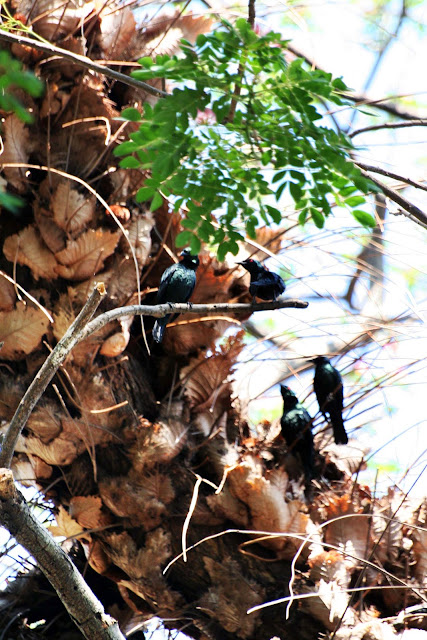Acacia and Drynaria - More than Commensalism
Dr Abe V Rotor
In nature the success of organisms in evolution and in keeping a stable place or niche in the ecosystem, is traced to two conditions: dominance over other organisms, and cooperation with certain organisms. The latter is a give-and-take relationship.
But where does commensalism belong? This is a relationship between a host and a commensal - the rider, so to speak. In the animl kingdom a good example is the shark and the Remora. The shark is the host on which the tiny Remora hitches on and shares with its host's morsel. Benevolence of the host is compensated by practically nothing at all - except companionship and the fact that it does no harm to the host.
Between ther acacia and the fern, the commensal is the fern. It lives in its entire life on the upper limbs of the tree. At the onset of monsoon or rainy season the fern wakes up from a state of turpor called aestivation, a biological phenomenon that characterizes many organisms - plants, animals and protists - to survive the harsh condition during the hot dry months which may last for half of the year, particularly in the tropics.
On the other hand, it is in the dry months that the acacia is active - its crown become luxuriant and full, because it has large secondary roots, and tap roots that can reach deep and wide for water and nutrients. It loves plenty of sunshine low relative humidity, while other plants - including the Drynaria - are in a state of dormancy.
When the rains come in May, the acacia begins to shed its leaves and being deciduous, loses its crown temporarily, allowing the sun and rain to nourish the Drynaria in its bed. In no time it grows two types of leaves. One kind is cup-like to capture and store organic matter and water, and to cover its fleshy corm. (The corm is likened to the underground rhizome of ginger to store manufactured food and water, and to grow new shoots.) The other type of leaves is staghorn-like, long and upright and carries mainly the job of food manufacturing through photosynthesis.
But commensalism is not restricted to the classical explanation. Nature has her own discreet ways and intentions. Birds like the Martines or black bird reside in the acacia because of the presence of Drynaria. Here the birds - as well as other tenants, like the gecko lizard and tree frog - find food and water trapped in between the fern leaves like miniature ponds . They find shelter, and even permanent home. They construct nests and rear their young. Droppings which are rich in organic mater and plant nutrients pay for the tenants' board and lodging, so with their predatory habit which keep the plants and the surroundings free from many pests. Because fog and mist condense on the Drynaria, both the host and tenants are greatly benefited. It is not unusual however that the fern's biomass may become too much of a burden of the branch they grow on, sending it to the ground specially during typhoon. With or without the extra load, sooner or later a limb may become oversized and fall off. It is nature's way of pruning and streaming the tree in the right size and proper shape.
The key to the return of threatened species like the Martines bird may be in building an alternative habitat for them in the absence of natural habitats which man in many ways has altered or destroyed. Here wildlife is brought closer to man's attention and domicile. The centuries-old acacia trees shown in this post are found growing in the front yard of St. Agustine Church in Tagudin, Ilocos Sur. Providence must have created this little corner of Eden where unity and harmony of living things reigns with man as guardian. ~
Martines or black birds build their nest on th Drynaria fern growing on an acacia tree




No comments:
Post a Comment